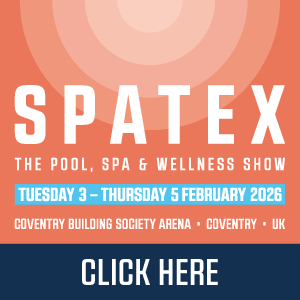CURRENT ISSUE
Click on the cover to view as a virtual edition:
DECEMBER 2025
Click on the cover to view as a virtual edition:
DECEMBER 2025
To see back issues, please click here.
MEDIA PACK
To download a PDF copy of the 2025 SPN media pack, click here.
To download a PDF copy of the 2026 SPN media pack, click here.
For forward features information, click here.
To discuss advertising within SPN, please call Tony Weston on +44 (0)1474 813433 or to email him, click here.
To download a PDF copy of the 2025 SPN media pack, click here.
To download a PDF copy of the 2026 SPN media pack, click here.
For forward features information, click here.
To discuss advertising within SPN, please call Tony Weston on +44 (0)1474 813433 or to email him, click here.
SUBMIT NEWS
To submit a news story or press release about your company, please click here.
PLEASE NOTE: When submitting, please ensure any image sent is high resolution.
To submit a news story or press release about your company, please click here.
PLEASE NOTE: When submitting, please ensure any image sent is high resolution.
LATEST NEWS
 Germany ready to report on asthma worry
Germany ready to report on asthma worry
A German Federal Environmental Agency investigation that exposure of children under two years of age to trichloramine while swimming may lead to an increased risk of developing asthma, will report formally this summer.
Trichloramine can be formed as a reaction product of chlorine, used to disinfect pool water, and urine, sweat, cosmetics or skin cells – it causes the typical odour found in swimming pools, generally perceived as the ‘chlorine smell’.
The possibility of a link between asthma and swimming in chlorinated pools was first raised in 2003 when Belgian scientists indicated a possibility that trichloramine causes damage to the lining of the lungs, measured by a drop in a specific protein in the blood.
Subsequent studies supported this hypothesis and showed a significant correlation between the age of a child’s first swim and a decrease in the marker protein. However, further studies are needed to determine fully the contribution of trichloramine and other by-products of chlorine to this process, and the critical concentrations of these chemicals at which damage may occur.
Preliminary investigations in Germany have found trichloramine concentrations in a small percentage of pools of up to 18.8mg/m³, despite recommended WHO guidelines of 0.50 mg/m³. UBA states that until further investigation is carried out, concerned parents of infants under two years with a predisposition to allergies must weigh up the benefits of swimming for their child with the possibility of an additional risk of developing asthma
<< Back to home

A German Federal Environmental Agency investigation that exposure of children under two years of age to trichloramine while swimming may lead to an increased risk of developing asthma, will report formally this summer.
Trichloramine can be formed as a reaction product of chlorine, used to disinfect pool water, and urine, sweat, cosmetics or skin cells – it causes the typical odour found in swimming pools, generally perceived as the ‘chlorine smell’.
The possibility of a link between asthma and swimming in chlorinated pools was first raised in 2003 when Belgian scientists indicated a possibility that trichloramine causes damage to the lining of the lungs, measured by a drop in a specific protein in the blood.
Subsequent studies supported this hypothesis and showed a significant correlation between the age of a child’s first swim and a decrease in the marker protein. However, further studies are needed to determine fully the contribution of trichloramine and other by-products of chlorine to this process, and the critical concentrations of these chemicals at which damage may occur.
Preliminary investigations in Germany have found trichloramine concentrations in a small percentage of pools of up to 18.8mg/m³, despite recommended WHO guidelines of 0.50 mg/m³. UBA states that until further investigation is carried out, concerned parents of infants under two years with a predisposition to allergies must weigh up the benefits of swimming for their child with the possibility of an additional risk of developing asthma
<< Back to home



















